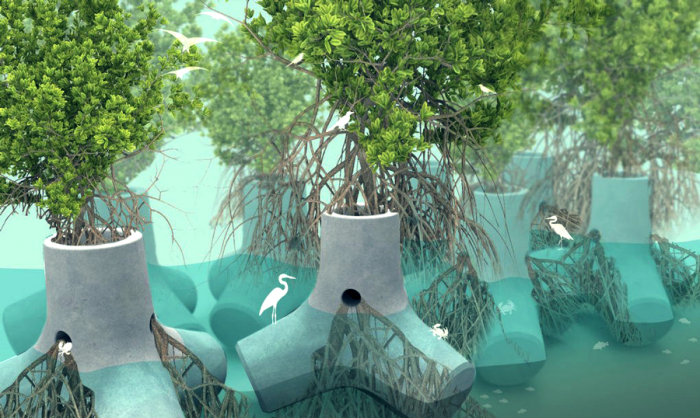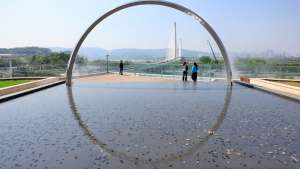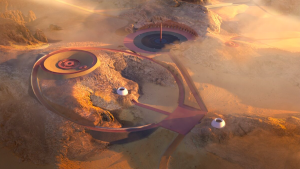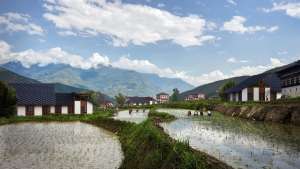From the Series

Beach-side towns across the globe are facing the mounting natural threat of coastal erosion. Rising sea levels paired with the relentless crashing of waves are causing swathes of loose soil along the world’s coasts to disappear into the ocean, in some cases taking vulnerable roads and even homes along with it. This relatively new danger has scientists and engineers investigating viable sea defence systems.
In the case of Ghana’s Atlantic coast, the small town of Fuveme is visibly shrinking. Waves have disintegrated entire chunks of the once prolific fishing community. In the UK, the North Sea is slowly swallowing parts of East Yorkshire, taking fields and roads into the watery depths.
To help protect coastal towns such as these, a single-unit solution has been devised - the TetraPOT. It is an ocean defence system that attempts to improve on the design of existing sea-defense blocks, which are unsightly concrete anchors that manage to break the power of waves but do little to protect the sand below them.
TetraPOT is actually a plant vessel. Its inside is hollow – the topmost pocket is designed to carry tree seeds while the lower compartment holds layers of organic gossamer (in which the seeds eventually grow).
The TetraPOT is designed to accommodate the fluctuating water levels of beaches. As the tide comes in and seawater rises around the tripod-like pot, a certain amount of water spills into the hollow part of the design. The organic cushion under the seeds become drenched, encouraging the plant to grow and develop roots downwards.
With roots reaching down for more moisture and nutrients, the plant’s root structure eventually emerges from TetraPOT’s three support chambers and the plant continues to grow into the ground below.
When a few TetraPOTs are grouped closely together, the tree roots eventually grow in a tangle and form a natural mangrove over time.
The heft of the TetraPOT allows it (when a number of them are arranged alongside one another) to form an above-ground barricade in the same way that existing cement blocks do and an additional defence is formed by the underground root structures. Not only do they hold the pot anchored in place, but the tree roots penetrate the earth below and continue to intertwine, physically supporting the soil against erosion.
In addition to the TetraPOT’s protective design, it can create a new ecosystem of its own by providing a habitat for insects and other beach-dwelling creatures.
The device’s dual purpose is described by the project’s slogan: “It is not only a defence but also an ecosystem – a new home for living beings”.







